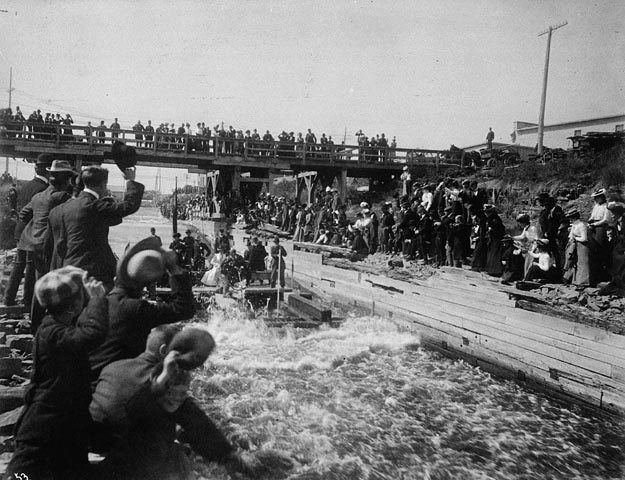 | ||
A timber slide is a device for moving timber past rapids and waterfalls. Their use in Canada was widespread in the 18th and 19th century timber trade. At this time, cut timber would be floated down rivers in large timber rafts from logging camps to ports such as Montreal and Saint John, New Brunswick. Rapids and waterfalls would, however, damage the wood and could potentially cause log jams. Thus at these locations timber slides were constructed. These were thin water filled chutes that would run parallel to the river. They would usually only be wide enough for a single log and one at a time the logs would be directed down it. The idea is attributed to Ruggles Wright who introduced the first one in 1829 not far from what is today down-town Hull, Quebec, Canada. Later, the slides could often be up to a kilometre in length. They were most commonly found on the Ottawa River system.
In some areas the timber slide became a tourist attraction, the most notable being the one bypassing the Chaudière Falls on the Ottawa River in Ottawa. Even the Prince of Wales, who later became King Edward VII, took a thrilling ride down the 1.2 km chute (see photo).
Timber slides disappeared after the construction of canal networks and the decline of the timber trade. They were almost all out of service by the First World War.
